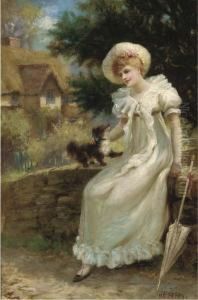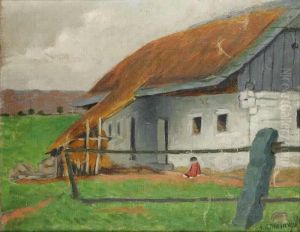Herbert Masaryk Paintings
Herbert Masaryk, though not as widely recognized as his father, Tomáš Garrigue Masaryk, the founder and first President of Czechoslovakia, was a notable figure in his own right, particularly in the realm of art. Born in 1880, Herbert's life was marked by his dedication to painting and drawing, through which he pursued his passion for the arts amidst the backdrop of a Europe that was rapidly changing both socially and politically.
From a young age, Herbert showed an inclination towards the arts, a path significantly different from the political and philosophical pursuits of his father. Despite the potential overshadowing by his father's monumental legacy in shaping a nation, Herbert carved out his own path, focusing on developing his unique style and artistic voice. His works, though not as extensively documented or studied as those of his contemporaries, provide a glimpse into the artistic movements of the early 20th century, characterized by a blend of modernism and traditional elements.
Herbert's career, however, was tragically cut short by his untimely death in 1915, at the age of 35. The details surrounding his death are scant, but it is known that his life ended amidst the turmoil of World War I, a conflict that reshaped Europe in countless ways. Despite his early death, Herbert Masaryk's contributions to the art world are remembered as part of the rich cultural tapestry of the early 20th century, reflecting the transitional period in art from the ornate styles of the 19th century to the more abstract and minimalist tendencies of the 20th century.
His legacy, though overshadowed by the political achievements of his family, remains an important footnote in the history of Czech art, illustrating the diverse paths of influence that members of a single family can have on both their country and its cultural heritage. Herbert Masaryk's life and work serve as a reminder of the often-overlooked figures in art history, whose contributions, though perhaps not monumental, are nevertheless integral to understanding the evolution of artistic expression during one of the most tumultuous periods in European history.






